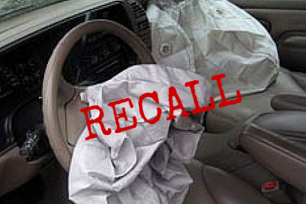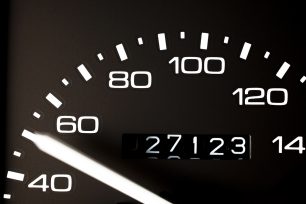A car’s odometer tracks how many miles it has traveled. Rolling an odometer—sometimes called “clocking” or “busting miles”—means altering the odometer reading so the car appears to have traveled less than it really has. This can lead to potential buyers thinking the car is in better condition than it actually is, and the seller justifying a higher price. In the era of mechanical, analog dials, perpetrators literally removed the speedometer, rotated the number drums backward, and reinstalled the unit. Today’s digital clusters were supposed to end that practice, but inexpensive handheld programing tools now plug into the OBD‑II port, edit the digital reading, and reflash the mileage in minutes. An entry‑level rollback tool costs about a hundred dollars online, which is less than the profit a seller makes by “removing” even 30,000 miles from a 3‑year‑old car.
Why does a false mileage reading hurt your wallet? How could it threaten your safety?
Price guides, lending institutions, warranty companies, and even insurers treat mileage as the single most powerful proxy for vehicle wear—and therefore value. When a vehicle shows 50,000 miles but has really run 120,000, you overpay up front, then inherit the timing‑belt replacement, brake job, and suspension rebuild that should have already occurred. Statistics from the National Highway Traffic Safety Administration (NHTSA) peg the nationwide cost of odometer fraud at more than one billion dollars annually, but the financial sting is only half the problem. Critical service intervals tied to mileage get skipped, which can leave you with a broken timing chain on the interstate or fading brakes on a downhill grade—real safety hazards you did not sign up for.How do I avoid buying a car with an odometer rollback?
A seasoned buyer corroborates the mileage claim from multiple, independent angles rather than trusting a single document or a seller’s assurances.- Digital history first. Record the car’s VIN (vehicle identification number) and order at least one full vehicle history report (Carfax, AutoCheck, and iSeeCars’ VIN Check Reports are good options) and ideally an NMVTIS‑based document as well, then line up the recorded odometer entries chronologically. A sudden drop or flat plateau over an extended period usually signals tampering.
- Physical consistency check. Walk around the car and decide whether the wear you see matches the mileage you are told. A 30,000‑mile sedan should not have polished‑smooth brake pedals, worn-down or splitting fabric on the seat bolsters, or tires worn down to the bars. Underhood grime, rust‑flecked underbodies, and ill-fitting doors are likely indicators that low odometer readings cannot hide.
- Paper trail audit. Flip through oil‑change stickers, service booklets, and inspection receipts. If any shop noted higher numbers than the dash shows now, you have your answer.
- Module interrogation. For late‑model vehicles, pay a dealership or an independent mechanic with factory‑grade scan tools to read the mileage embedded in the control units. A mismatch between that hidden figure and the dash is irrefutable evidence of odometer tampering because the car itself is testifying against the altered gauge cluster number.


































































